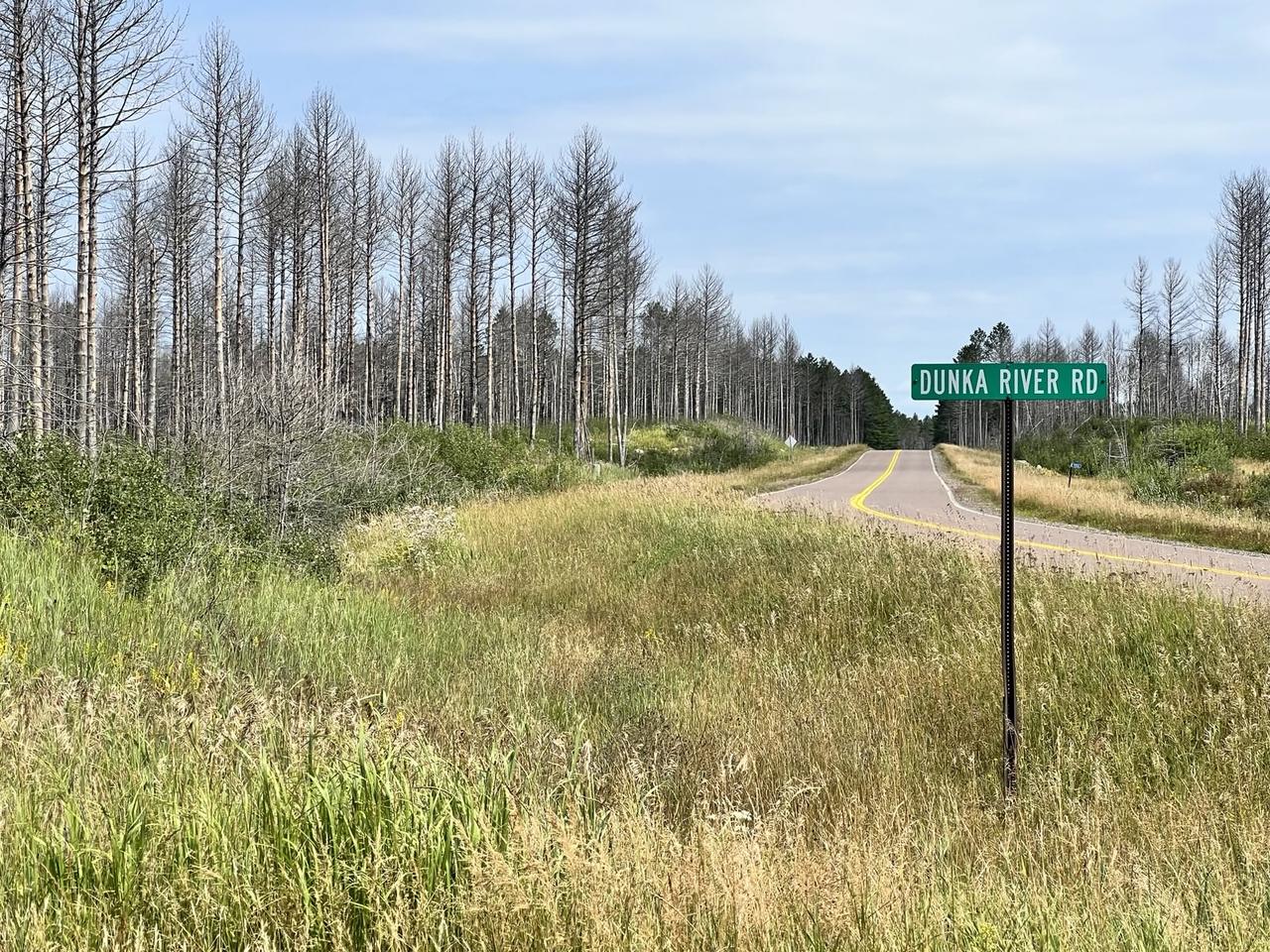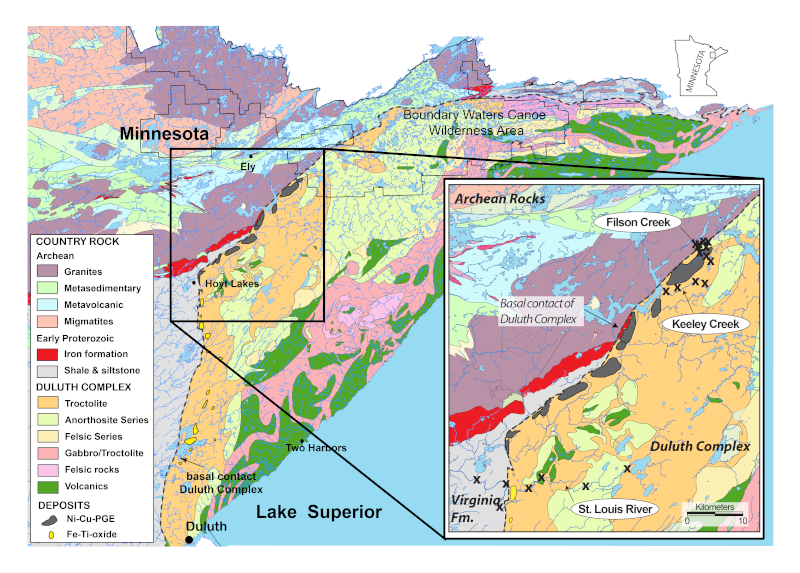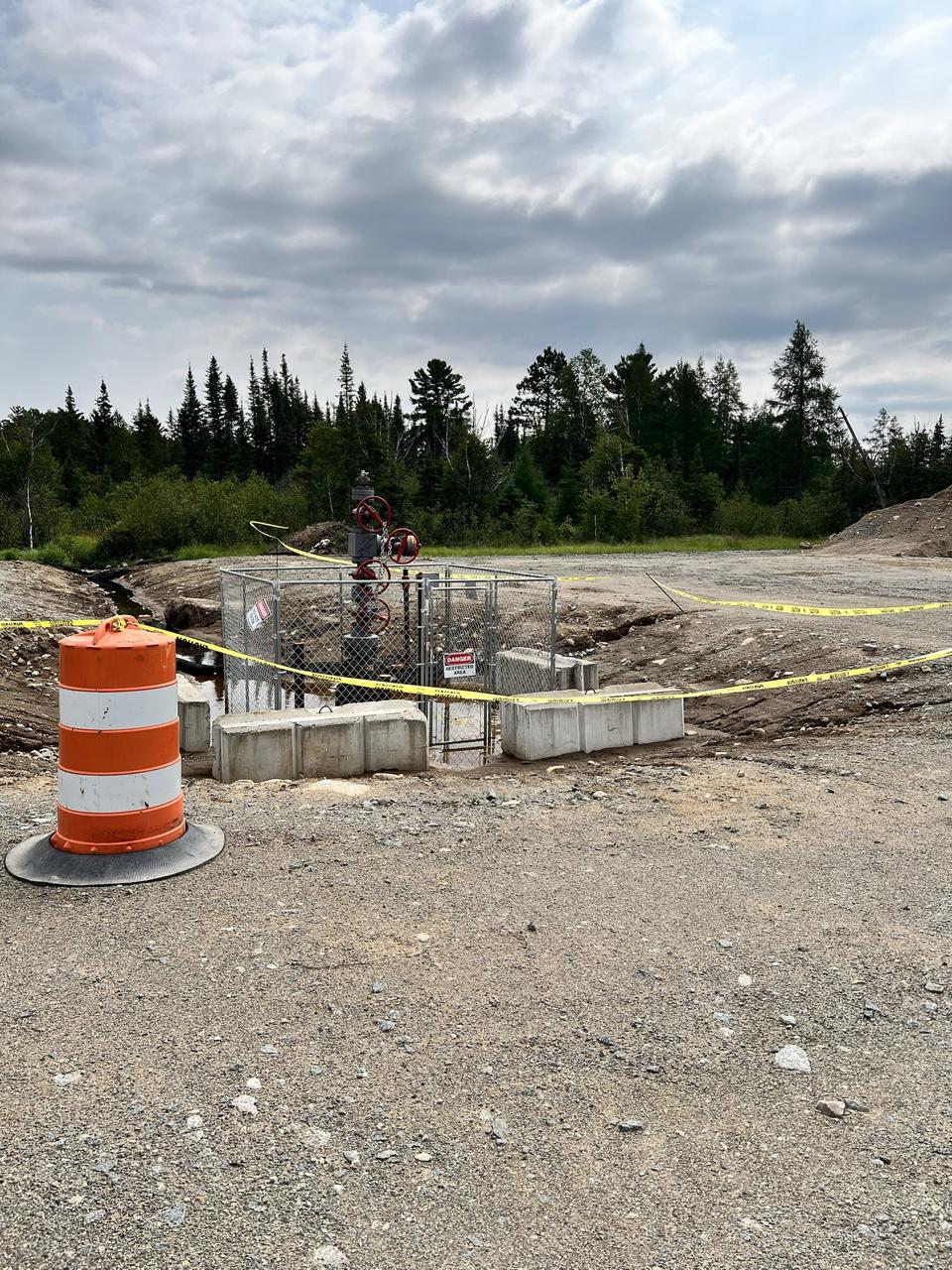 I'm taking a detour from my usual topics of single board computers, programming languages, mathematics, machine learning, 3D printing and financial markets to write about the geology of a part of Minnesota that held a facinating secret until very recently.
I'm taking a detour from my usual topics of single board computers, programming languages, mathematics, machine learning, 3D printing and financial markets to write about the geology of a part of Minnesota that held a facinating secret until very recently.
Located in a remote and rugged corner of northeastern Minnesota, the Duluth Complex is a vast and fascinating geological region that has captivated scientists and explorers for decades. Situated near the Boundary Waters Canoe Area Wilderness, this intricate network of rocks and landforms holds secrets of the Earth's history, from ancient rock formations to hidden treasures like precious metals and other valuable resources. The complex includes the Dunka River area, a region of rugged beauty and geological significance.
The Duluth Complex is a window into the past, offering insights into the formation and evolution of our planet over billions of years. Its rocks tell the story of intense volcanic activity, massive earthquakes, and ancient seas that once covered the area. The complex's unique geology has also made it an attractive destination for explorers seeking to uncover its hidden treasures.
In this article, we will delve into the fascinating geology of the Duluth Complex and explore how a chance discovery of helium in a drilling project revealed a new aspect of this complex geological feature. We will examine the geological processes that shaped the region, the significance of the helium discovery, and what it may reveal about the Earth's history. By exploring the secrets of the Duluth Complex, we hope to gain a deeper understanding of our planet's fascinating geology and its many mysteries still waiting to be uncovered.
The Duluth Complex is a large igneous intrusion that formed approximately 1.1 billion years ago during the Proterozoic era. The complex is composed of a variety of rock types, including gabbro, granite, and sedimentary rocks, which were emplaced into the surrounding crust through a series of intrusive events.
Gabbro is the dominant rock type in the Duluth Complex, making up the majority of the intrusion's volume. This coarse-grained, dark-colored rock is rich in iron, magnesium, and calcium, and poor in silica, giving it a distinctive chemical composition. The gabbro is thought to have formed through the cooling and solidification of magma deep within the Earth's crust.
 Granite is also present in the Duluth Complex, although it is less abundant than gabbro. This lighter-colored, coarse-grained rock is rich in silica and aluminum, and forms a distinctive suite of rocks that are different from the surrounding gabbro.
Granite is also present in the Duluth Complex, although it is less abundant than gabbro. This lighter-colored, coarse-grained rock is rich in silica and aluminum, and forms a distinctive suite of rocks that are different from the surrounding gabbro.
Sedimentary rocks are also found in the Duluth Complex, particularly along the margins of the intrusion. These rocks were formed through the erosion and deposition of sediments from the surrounding crust, which were then metamorphosed by the heat generated during the emplacement of the gabbro.
The contact between the gabbro and the surrounding rocks is a zone of intense alteration and deformation, where the heat and pressure generated by the intrusion caused significant changes to the country rocks. This contact zone is characterized by a range of features, including metamorphic aureoles, faulting, and shearing, which provide important insights into the geological history of the Duluth Complex.
The Dunka River area is a region of profound geological significance, shaped by a complex interplay of ancient glacial activity and volcanic processes. The river winds through a landscape marked by rugged outcrops of Precambrian bedrock, including gneisses, granulites, and migmatites, which provide valuable insights into the tectonic evolution of the region. These rocks have been subjected to multiple episodes of deformation, metamorphism, and magmatic activity, resulting in a complex geological history that spans over 2.5 billion years.
The volcanic bedrock in the area is comprised of mafic to intermediate composition rocks, including basalts, andesites, and dacites, which are characteristic of the Midcontinent Rift System (MCRS). The MCRS is a zone of extensional tectonism that formed during the Mesoproterozoic era, approximately 1.1 billion years ago. The volcanic rocks in the Dunka River area display a range of textures and structures, including pillow lavas, hyaloclastites, and volcanic breccias, which indicate a submarine to subaerial eruptive environment.
The quarries in the area have been a focus of mineral extraction, with economic deposits of copper, nickel, and platinum group metals (PGMs) being mined from the Duluth Complex. The Duluth Complex is one of the largest known intrusions of layered mafic-ultramafic rocks in the world, covering an area of over 1,500 square kilometers. It is characterized by a series of repetitive layers of peridotite, pyroxenite, and gabbro, which are rich in PGMs and other magmatic sulfide minerals.
The Dunka River area is also significant for its geological diversity, with multiple generations of faults, fractures, and folds being present. The area has been affected by multiple episodes of tectonic activity, including the Penokean orogeny and the Mesoproterozoic extensional event. These events have resulted in a complex network of faults and fractures, which provide conduits for fluid flow and mineralization.
Amidst this backdrop of geological richness, a surprising discovery has added a new dimension to the area's significance. During an exploratory drilling operation, geologists uncovered traces of helium within the volcanic bedrock. This discovery is particularly noteworthy because helium is a non-renewable resource with critical applications in technology and industry.
 The discovery of helium in the Dunka River area was a serendipitous event that occurred during a routine exploratory drilling project. Geologists were primarily focused on assessing the area's potential for copper, nickel, and platinum group metals, given the region's rich geological history tied to the Duluth Complex. However, during the drilling process, gas samples collected from the wellhead exhibited unusual properties, prompting further analysis. Using gas chromatography and mass spectrometry, the team identified a significant presence of helium, a rare and valuable element. This discovery was unexpected, as helium is typically associated with natural gas fields, and its presence in volcanic rock formations like those in the Duluth Complex was unprecedented.
The discovery of helium in the Dunka River area was a serendipitous event that occurred during a routine exploratory drilling project. Geologists were primarily focused on assessing the area's potential for copper, nickel, and platinum group metals, given the region's rich geological history tied to the Duluth Complex. However, during the drilling process, gas samples collected from the wellhead exhibited unusual properties, prompting further analysis. Using gas chromatography and mass spectrometry, the team identified a significant presence of helium, a rare and valuable element. This discovery was unexpected, as helium is typically associated with natural gas fields, and its presence in volcanic rock formations like those in the Duluth Complex was unprecedented.
The significance of this discovery cannot be overstated. Helium is essential for various high-tech applications, including medical imaging, scientific research, and space exploration, and global reserves are limited. The discovery in the Dunka River area not only highlights the region's potential for helium extraction but also provides new insights into the geological processes that shaped the Duluth Complex. Geologists believe that the helium found here originated from the radioactive decay of elements like uranium and thorium within the Earth's crust. Over millions of years, this helium accumulated and became trapped in the dense basalt and gabbro formations characteristic of the area. The impermeable nature of these rocks likely prevented the helium from escaping, allowing it to be preserved until its recent discovery.
The helium discovered in the Dunka River area is believed to have originated deep within the Earth's crust, where the radioactive decay of uranium and thorium over geological time scales produced helium as a byproduct. This helium, typically in the form of alpha particles, gradually accumulated in the surrounding rock formations. The unique geology of the Duluth Complex, with its dense and impermeable basaltic layers, created ideal conditions for trapping the helium, preventing it from migrating to the surface or dissipating into the atmosphere. The discovery suggests that the region may have experienced localized tectonic activity or magmatic intrusions that provided pathways for the helium to migrate and concentrate in certain areas.
This discovery has profound implications for our understanding of the geological history of the Duluth Complex and the surrounding region. It suggests that the area may have experienced a more complex sequence of geological events than previously thought, including periods of significant tectonic activity and magmatism that contributed to the trapping of helium. Additionally, the presence of helium in volcanic rocks, rather than the more typical sedimentary formations, challenges existing models of helium migration and storage, opening new avenues for research. As exploration continues, the Dunka River area could become a key site for understanding the distribution and behavior of helium in the Earth's crust, with potential economic and scientific benefits for the region and beyond.
In this article, we have explored the fascinating geology of the Duluth Complex and Dunka River area, highlighting the unique features that make it a valuable site for scientific research. We discussed the complex's layered mafic-ultramafic rocks, rich in platinum group metals and other magmatic sulfide minerals. The recent discovery of helium within the volcanic bedrock adds a new dimension to our understanding of this region. As we reflect on the significance of these findings, it becomes clear that continued exploration and research are crucial for unlocking the secrets of the Duluth Complex. The discovery of helium has far-reaching implications for our understanding of the Earth's geological history, and further investigation is necessary to fully appreciate its potential impact. Ultimately, this region holds many secrets yet to be uncovered, and ongoing research will undoubtedly shed new light on the complex and fascinating geology of the Duluth Complex.
